With great price comes great risk
If you’ve been worried that baseball card products weren’t expensive enough and have been envious of football card collectors with their super-duper-ultra-mega-premium products, Topps has heard your pleas and brought Five Star to baseball for 2012. With a starting price of $500 per pack (which dropped to around $400 within a couple weeks of release), you were basically paying for a case of cards and only getting the case hits. The stakes have never been this high, which means that an unprecedented level of disappointment was soon to follow.
So what does $500 get you these days? Not a whole lot as it turns out. Here’s the pack breakdown:
1 Active Player Autograph
1 Retired Player Autograph
1 Autographed Booklet or some other autograph
1 Autographed Relic
1 Relic
And, as a last-minute reveal, packs will also include a base card numbered to 80 or 10! Yes, after they ditched the base cards in Tier 1, they added them in at the last minute for Five Star. I have no idea what they’re doing over there, but I guess it’s a bonus.
Sounds good, right? I mean, as long as you don’t pull a bunch of cards that sell in the $10-20 range, but how likely is that? Almost certain as it turns out, but there’s still a real chance of pulling at least one card that will sell for $100. So really, you might be able to get $200 out of a pack, which isn’t that bad. Unless you paid $500 for it. Oops. But the big hits! 8 player autographs! Booklets! All autographs are on-card and all relics are game-used (just like everything was in 2001…)! Imagine yourself selling a card for $1500! Which probably won’t happen until you’ve gone through at least four packs, or possibly four cases… But at least you have some nice stuff left over after selling off the hits. Oh, right, there’s nothing else there, just the seconds of enjoyment from opening packs. Five Star sells you on the concept and the experience, which may be all you walk away with after putting your money down.
I bailed out of the high-dollar pack market way back in the beginning with SP Game Bat and Pacific Private Stock in 2001. $20 per pack was pushing it back then and it didn’t take more than a couple of worthless packs to sour me on the whole concept. Buying singles on the secondary market was always a better deal and that remains true to this day. I haven’t touched packs of any of this year’s other high-end products and I’m not taking any chances with Five Star. But there are some nice must-have cards in this product that will cost you a lot less than $500 to pick up. The cards are all 4mm thick, which is annoying because common toploader sizes go from 3.5mm to 5mm with nothing in between. And they all have a massive problem with chipping and corner wear.
Base Cards
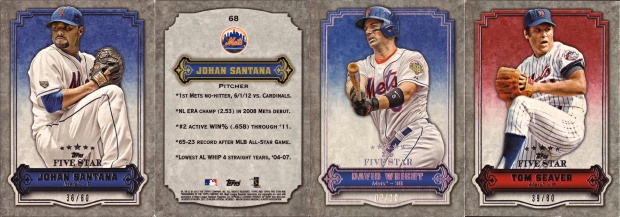
Base: Numbered to 80
Rainbow: Numbered to 10
Mets: Johan Santana, Tom Seaver, David Wright
Added at the last minute, these are super-thick cards that look a lot like the base autographs. David Wright is here as always, joined by Tom Seaver and Johan Santana. If you were hoping for a deep field of Mets, you might as well stop reading now because Dave Kingman and R.A. Dickey are the only other Mets in the entire product (and people are complaining about there being too many lesser players in Five Star…). As with everything else in Five Star, these are heavily color-coded: red for retired players and blue for active players, with the stone pattern from the cardbacks (rotated 180 degrees) as a border. There’s a lot of design here and one big player picture, which looks to me like it’s trying too hard to look premium. I’ve seen nicer designs on early ’90s products and those didn’t sell for $500 per pack.
Jumbo Jersey Relics
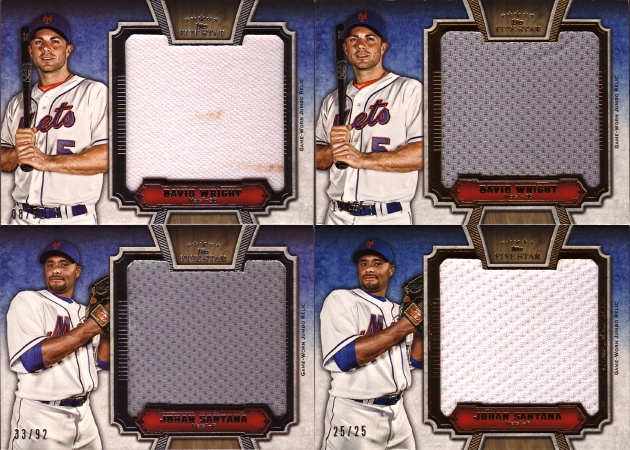
Silver: Numbered to 92
Gold: Numbered to 25
Rainbow: Numbered to 1
Mets: Johan Santana, David Wright
Jumbo relics are great in normal products, but they’re largely just junk in this one. Santana and Wright both have white and gray swatches here, so there’s nothing to get excited about. They’re cheap at least. The 1/1s have a piece of patch, but the premium price that they’ll fetch (probably around 1/4 of the price of a pack) isn’t really worth it to buyers or sellers.
Five Star Autographs
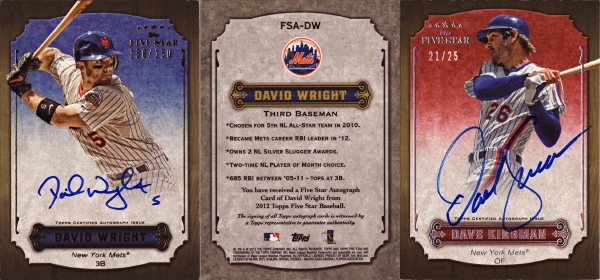
Silver: Numbering Varies
Rainbow: Numbered to 25
Mets: Dave Kingman, Tom Seaver, David Wright
While these cards look a lot like the base cards, the designs are completely different, though mostly the same. The border switches from the light stone in the base cards to a very dark wood grain here, which makes the chipping more visible.
Five Star Quotable Autographs
Numbered to 10
Mets: Tom Seaver, David Wright
How can you not like a David Wright autograph with a “Let’s Go Mets!” inscription? These are way out of my price range unfortunately, but the hobby could use more of this kind of variety in autograph cards.
Five Star Silver Ink Autographs
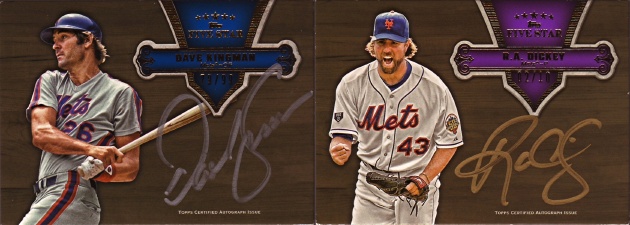
Silver Ink: Numbered to 99
Gold Ink Gold Border: Numbered to 10 or less
Gold Ink Purple Border: Numbered to 10 or less
Gold Ink Red Border: Numbered to 10 or less
Mets: R.A. Dickey, Dave Kingman, David Wright
Notable here are the first on-card autographs from R.A. Dickey. The gold ink parallels are the big hits (well, bigger, it’s hard to call a $50-100 card a “big hit” in a $500 pack), but even the silver ink base versions look great. These are the real must-have autographs in Five Star, skip the rest if you’re just looking for one or two nice cards. Shame about the chipping.
Five Star Booklet Triple Relic Autograph
Silver: #d/99 or less (49 for Wright)
Gold: Numbered to 10
Rainbow: Numbered to 1
Mets: David Wright
Oh boy, three small white pieces of fabric (some dirty) and an autograph on the other piece of the booklet when there’s still plenty of room on the relic side. These just don’t interest me at all.
Multiplayer Cards
Numbered to 5
Mets: Johan Santana (2 and 4 Patch), David Wright (2, 3, 4, and 8 Patch)
The cards that got people drooling over 5 Star were the massive multiplayer cards with patches or autographs from up to 8 different players. Numbered to only 5 each (10 for some of the autograph cards), the odds of pulling one are slim, but at least you stand a chance at getting your money back if you do. David Wright and Johan Santana are the only Mets here, with both of the Santanas on cards that also feature Wright, for a total of four different cards.
Other Cool Stuff
Sorry, no Mets here. 5 Star has some nice extremely limited cards, but the Mets didn’t make the cut.
Bottom Line
Anything numbered to more than 10 in this product is junk. That’s great for singles buyers, not so great for pack breakers. Of the Mets cards numbered to more than 10, only the Wright, Dickey, and Seaver autographs and the Wright triple relic autograph will sell for more than $30, with most others regularly selling for less than $20. That means you should be able to get all of the Mets cards numbered to more than 10 plus the base cards numbered to 10 for around $500, if you can find enough sellers willing to take a chance on the product and then sell the contents for fair market value. That’s 20 cards, 10 of them autographed, for the price of one pack. You’re guaranteed not to get any big hits this way, but at least you know what you’ll be getting. That is, a bunch of really thick cards with fancy designs and widespread chipping. Eh, maybe this isn’t a product to buy into that big.




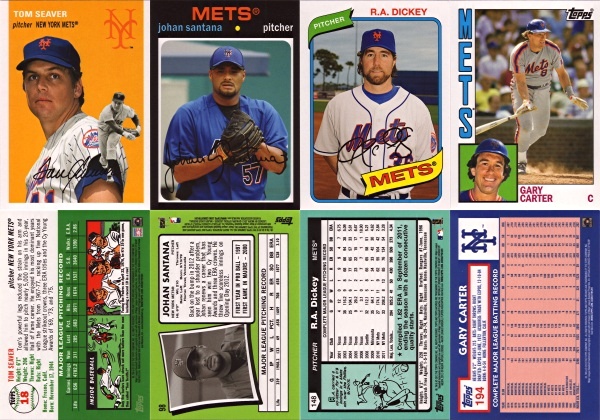
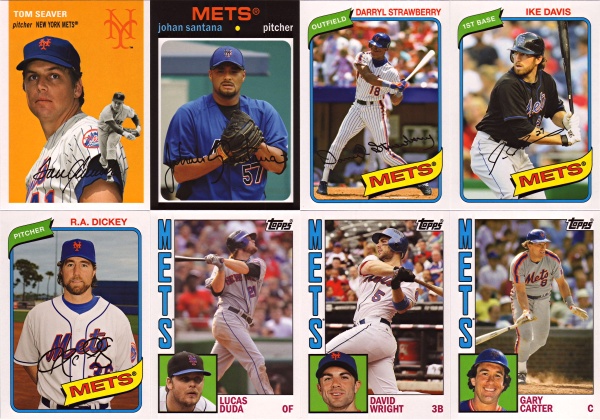
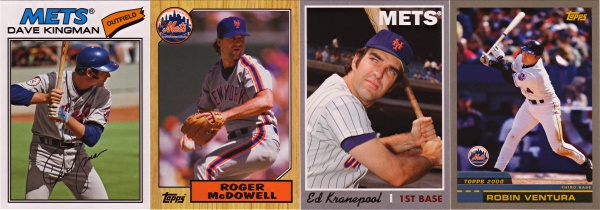
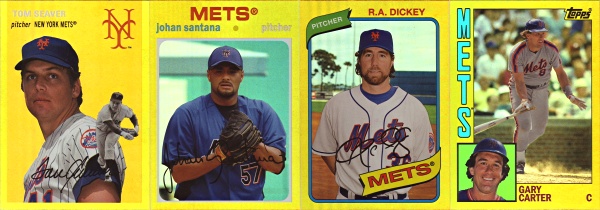
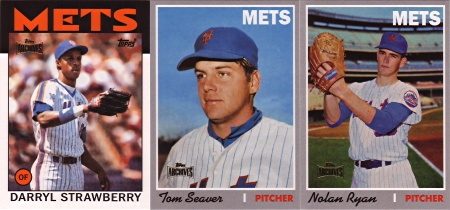
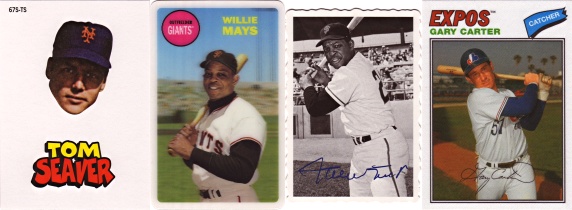
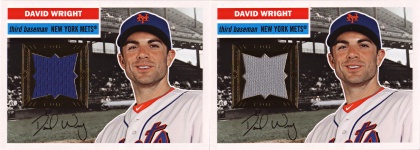
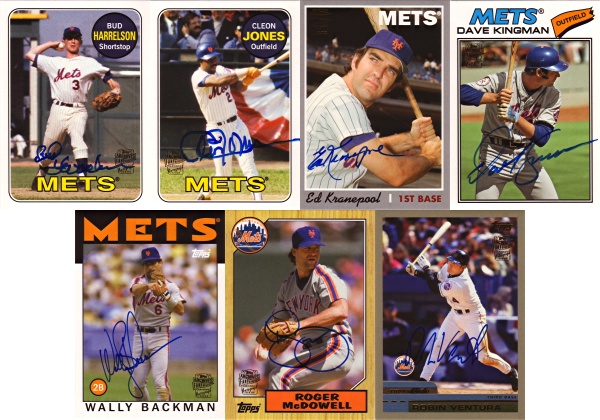
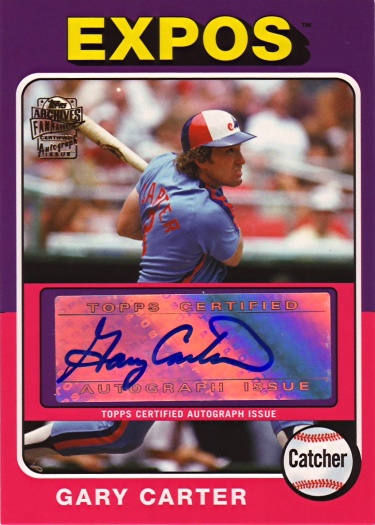

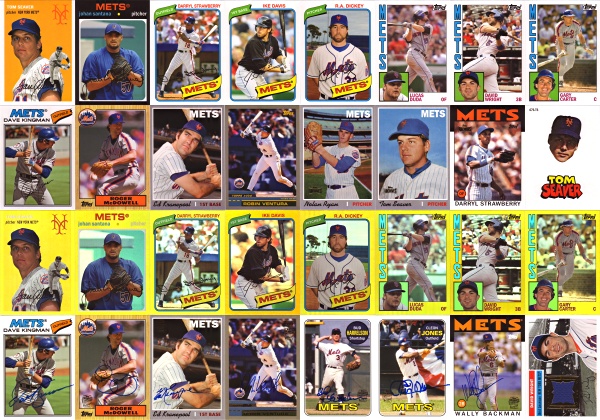
Recent Comments